 |
News |
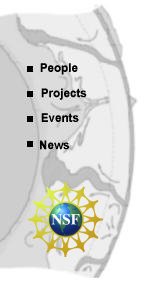
|
We are thrilled to welcome Vishal Manve as the new Project Coordinator for the MINERALS Project. Vishy brings a wealth of experience and fresh energy to our team, and we at LDEO/SGT are excited to have him on board as we continue to grow and advance the project’s mission.

Congratulations to Tianqi Wan for successfully defending his PhD today! 🎓🎉
At APS meeting, we had a special evening to honor Tianqi’s graduation and spend quality time with our friends and colleagues.
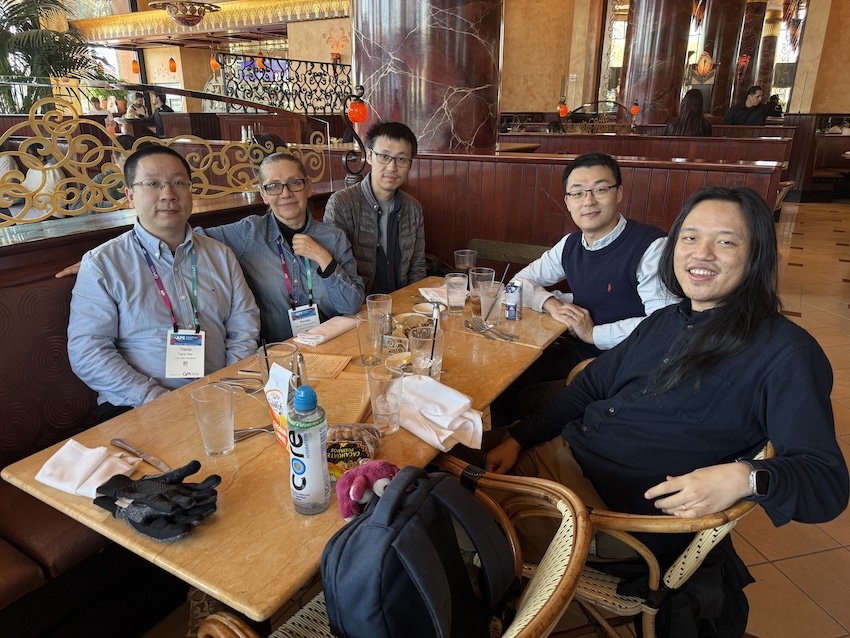
Join Our Team in Computational Mineral Physics!
The Wentzcovitch Group at the Lamont Doherty Earth Observatory, Columbia University, is seeking talented individuals to fill two exciting positions in computational mineral physics. These roles are part of the project Modeling Earth from Atomic to Global Scale (MINERALS), funded by the Gordon and Betty Moore Foundation.
A primary goal of this project is to develop a mineral properties database for geophysical modeling, particularly for the interpretation of seismic tomography models and their geodynamics investigation. Research activities will involve regular communication and collaboration with seismologists and geodynamicists on related aspects of the overall project and with a group of international contributors for database development. The ability to think and work across disciplinary boundaries is a plus.
Position 1: Postdoctoral or Associate Research Scientist
Focus: Ab Initio and Machine Learning for Materials Simulations
We are looking for a computational materials physicist/scientist with extensive experience in ab initio methods and machine learning. Candidates with expertise in one or more of the following areas are strongly encouraged to apply:
a) solid solution modeling, b) studies of strongly correlated oxides, c) calculations of thermodynamic and thermoelastic properties with phonons and/or molecular dynamics, d) advanced programming skills.
Application link: Position 1
Position 2: Postdoctoral or Associate Research Scientist
Focus: High-Throughput Software Development and Database Implementation
We are seeking a candidate with advanced computer science skills to: a) advance software high-throughput methods for materials simulations, b) implement scientific workflows in ACCESS to mass produce ab initio results, and c) develop databases.
Application link: Position 2
Additional Details
Duration: Positions are initially funded for one year, with potential extensions of up to four years.
Eligibility:
- Postdoctoral Research Scientist: PhD in computational materials/mineral physics or materials science (recently completed or near completion).
- Associate Research Scientist: PhD plus at least 2 years of relevant post-PhD experience.
Salary:
- Postdoctoral Research Scientist: $71,050.
- Associate Research Scientist: $80,000–$90,000.
Join us in advancing geophysical modeling and uncovering the secrets of Earth’s interior. Applications are reviewed on a rolling basis, so don’t miss the opportunity to apply!
A double celebration for our group at the AGU conference! 🎉 We came together to celebrate Dr. Jingyi Zhuang’s graduation and enjoyed a wonderful gathering with colleagues and friends.
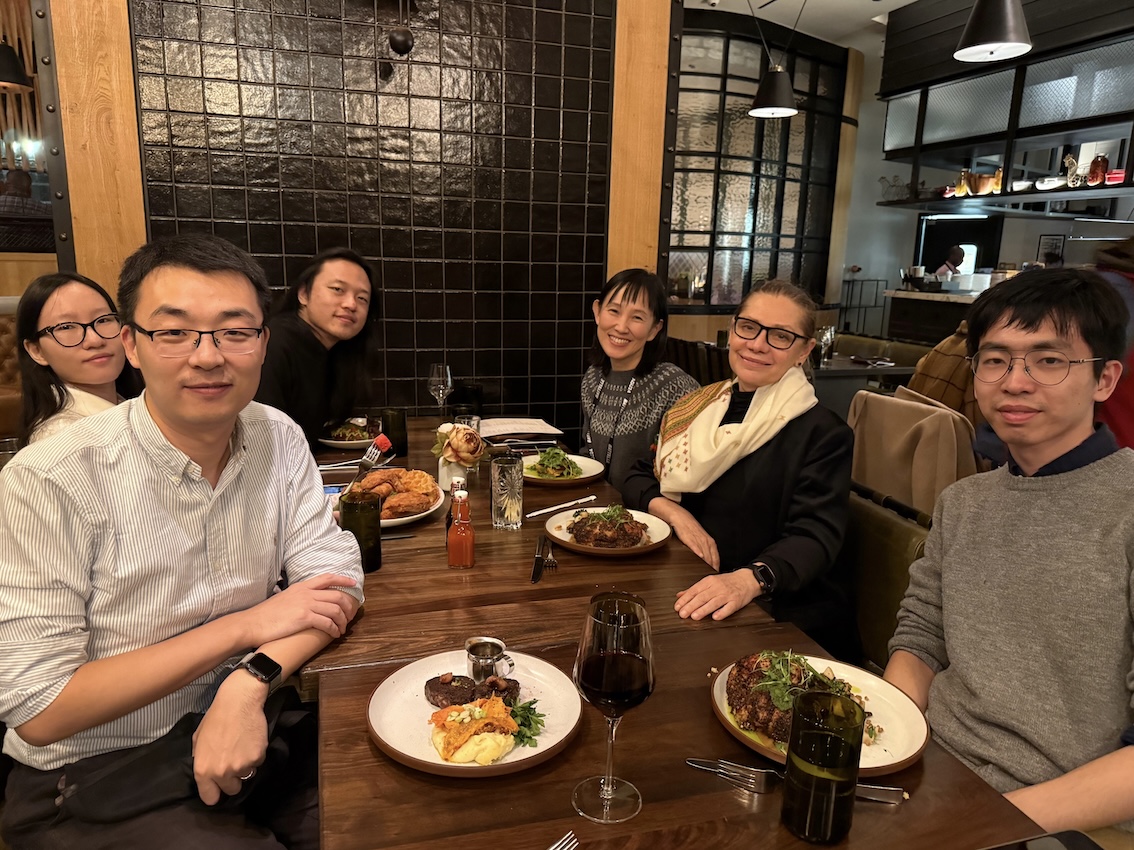
It was a memorable evening of reconnecting and celebrating shared accomplishments.
Congratulations once again, Jingyi!
Congratulations to Jingyi Zhuang for successfully defending her PhD today! 🎓🎉
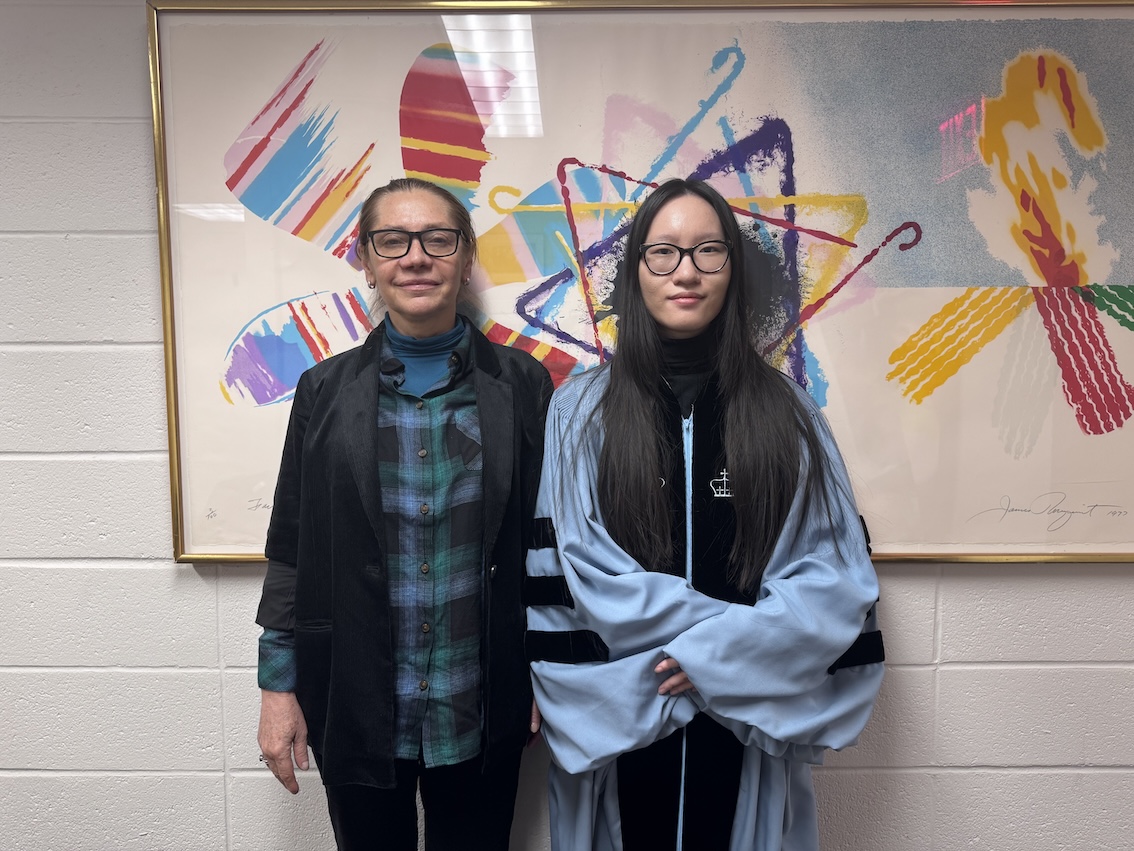
Our group gathered for a well-deserved celebration party to honor Dr. Chenxing Luo’s achievements and to send him to Princeton for his next exciting chapter!

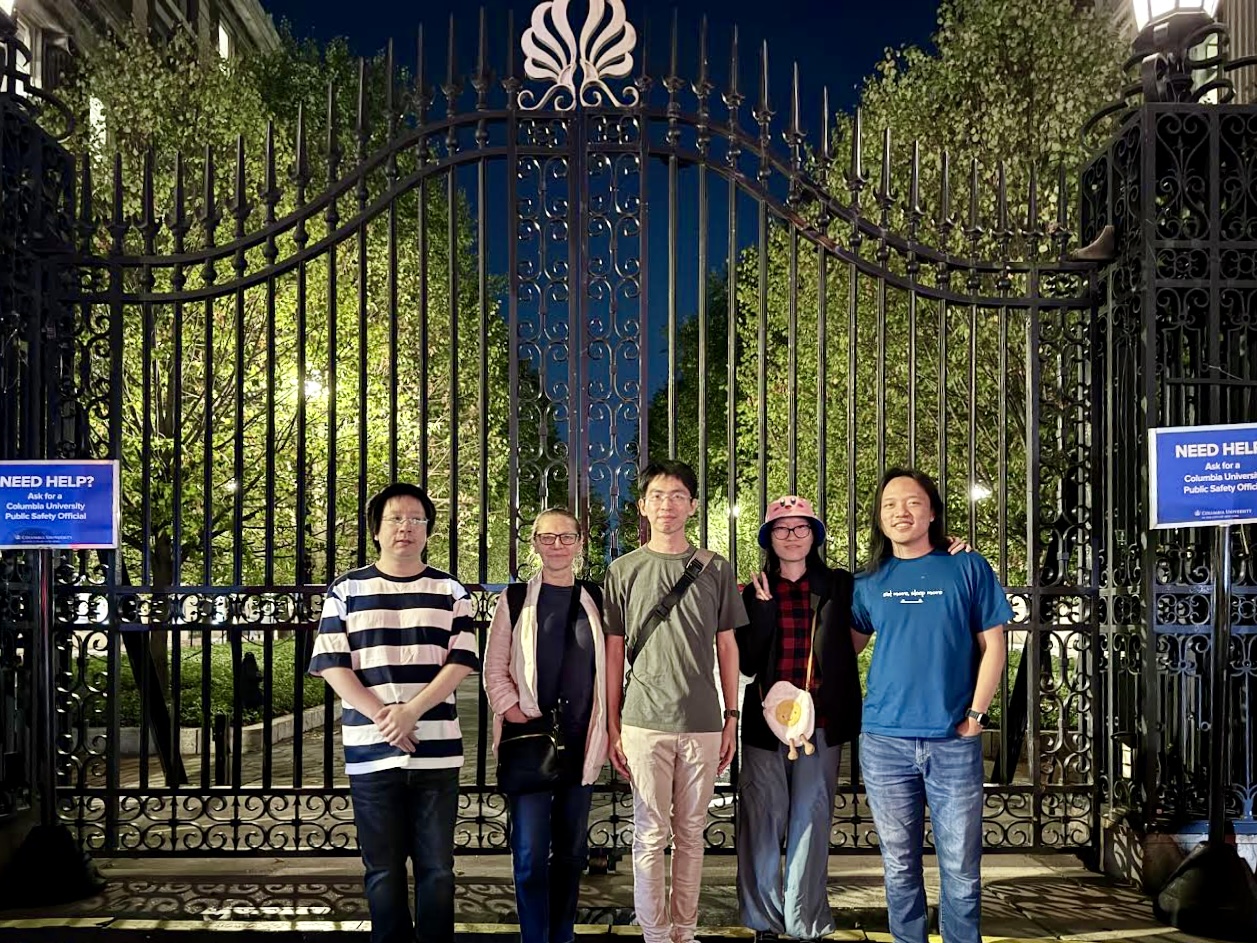
Congratulations once again, Chenxing!
We are proud to congratulate Chenxing Luo on successfully defending their PhD! 🎉
Best wishes for your bright future ahead, Chenxing!
We are delighted to share that on May 10, 2024, we had a wonderful dinner together to celebrate Dr. Qi Zhang’s graduation and to send him to Los Alamos 🎉.


Congratulations, Qi!
We are proud to announce that Qi Zhang has successfully defended his thesis and has earned his Ph.D.

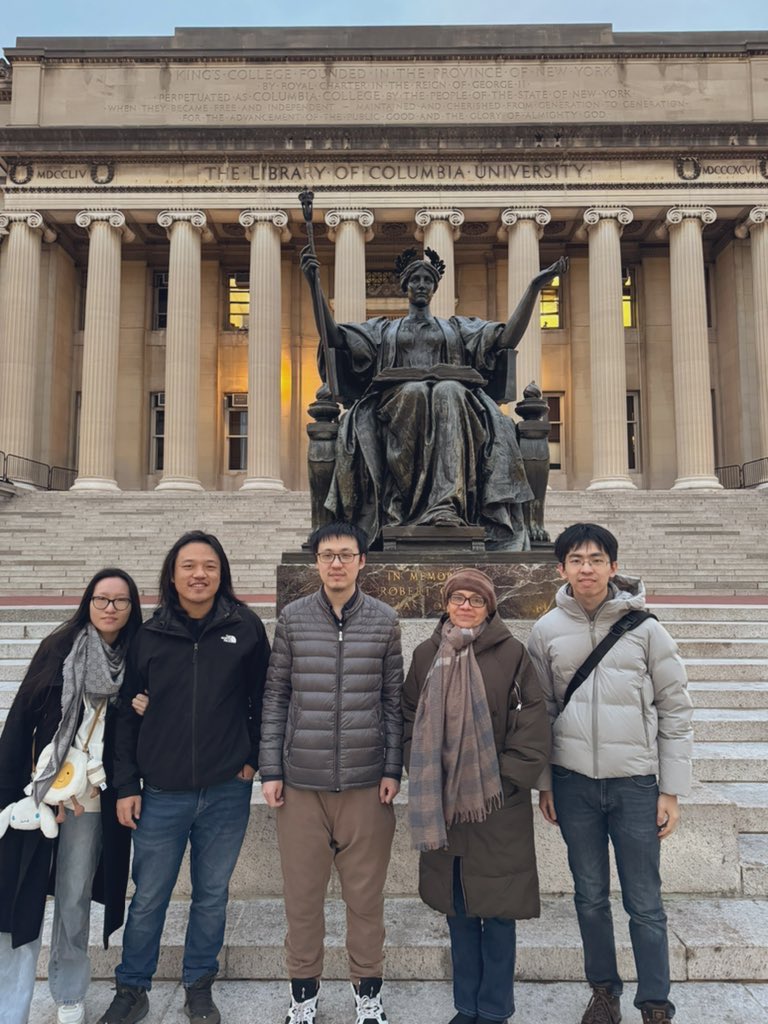
Hard work pays off, and you’ve proved it. Super proud to have you in our crew. Here’s to your bright future!
Join us in our Twitter feed for celebration!
With a heavy heart, we communicate the passing of Prof. David. A. Yuen. His upbeat optimism, creativity, geophysical insights, and friendship will be deeply missed. A great loss to geophysics.
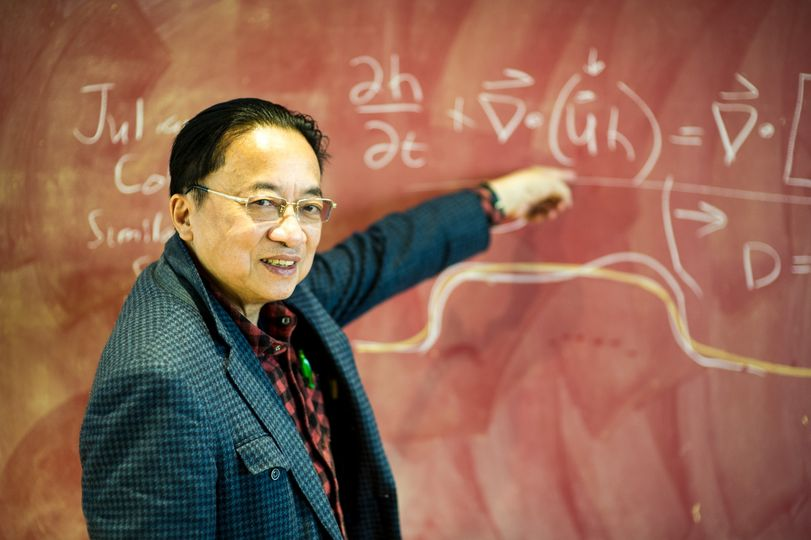 Dave, you were one of a kind!
Dave, you were one of a kind!
We are proud to announce that Zhen Zhang has successfully defended his thesis and has earned his Ph.D.

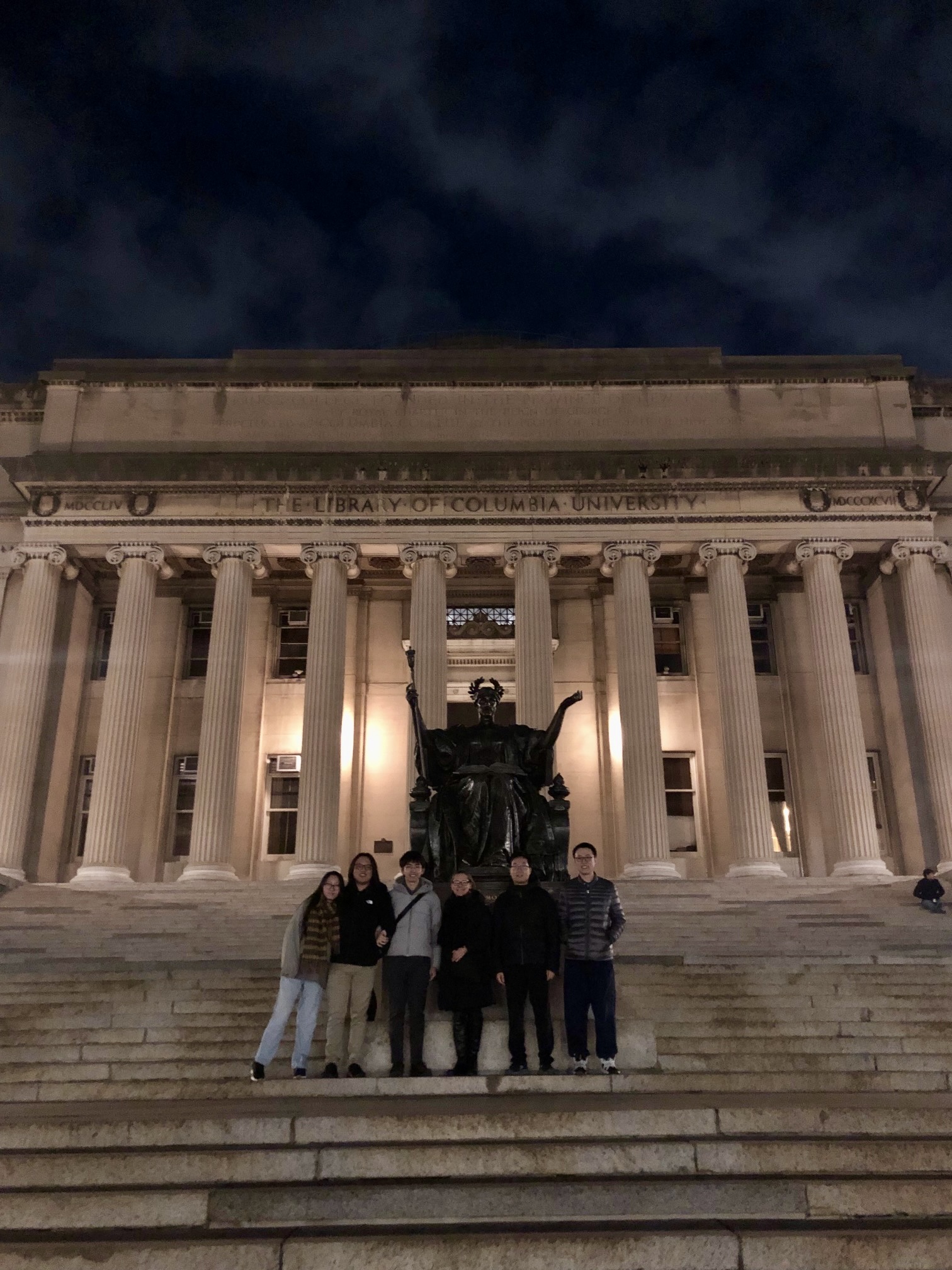

We wish him all the best in his future endeavors and look forward to seeing the impact of his research in the field.
Congratulations once again, Dr. Zhen Zhang!
Join us in our Twitter feed for celebration!
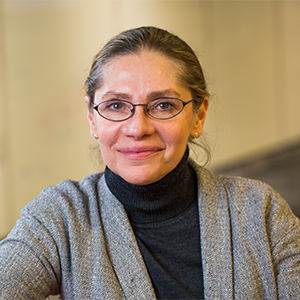
Renata Wentzcovitch, professor of material science, applied physics, and earth and environmental sciences, has been named president-elect for the American Geophysical Union. (Read More)
Congratulations to Tian Qin for passing his Ph.D Thesis Defense!
Press Highlights
What is it about?
FeO is a compound of great interest in condensed matter physics and geophysics. It has complex and subtle structural, magnetic, and electronic transitions. It has been challenging for theoretical/computational methods to address such property changes in a prototypical, strongly correlated material such as FeO. This paper shows that the fundamental properties of FeO can be described successfully at high pressures and temperatures by a standard density-functional-based method once its dynamic complexity and electronic excitations are addressed simultaneously.
Why is it important?
This work establishes the theoretical framework to predict the properties of iron alloys at the extreme thermodynamic conditions of the Earth’s core, an enigmatic planet region. This framework should be a starting point for investigating the properties of other alleged strongly correlated materials at more normal thermodynamic conditions.
Perspectives
Several theoretical/computational methods needed to be developed to address diverse challenges before a full-scale simulation of this complex material could be performed successfully under such extreme pressure and temperature conditions. The authors used a novel combination of approaches and methods developed in-house to perform these simulations.
– Renata Wentzcovitch
A quantum phase transition called spin crossover can be used to visualize deep-Earth processes like subducting tectonic plates. Photo credit: Nature Communications
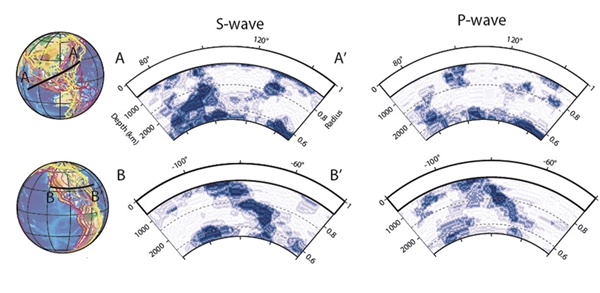
Shephard, G.E., Houser, C.,et al., Wentzcovitch, R.M., Seismological expression of the iron spin crossover in ferropericlase in the Earth’s lower mantle. Nat Commun 12, 5905 (2021). https://doi.org/10.1038/s41467-021-26115-z
Click to preview the magazine PDF.
A new study investigates iron’s form at the planet’s interior. The findings have repercussions for understanding the inner core’s structure.

Y. Sun, M. I. Mendelev, F. Zhang, Z. Liu, B. Da, C.-Z Wang, R. M. Wentzcovitch, and K.-M. Ho. Geophys. Res. Lett. (2023). https://doi.org/10.1029/2022GL102447
Press Highlights
Earth’s inner core is dominated by iron, which can exist as a solid material in more than one crystallographic form. (This quality allows iron to combine with other elements to form alloys.) Iron’s most stable form at room temperature is the body-centered cubic (bcc) structure. At extremely high pressures, it is stable in its hexagonal close-packed (hcp) phase. Of considerable debate, however, is iron’s structure at the center of Earth. In a new study, Sun et al. get one step closer to an answer.
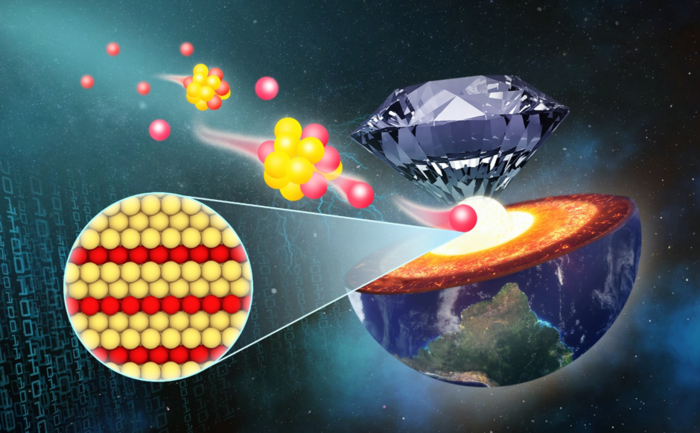
J. Liu, Y. Sun, C. Lv, F. Zhang, S. Fu, V. B. Prakapenka, C.-Z. Wang, K.-M. Ho, J.-F. Lin, R. M. Wentzcovitch. The Innovation (2022). https://doi.org/10.1016/j.xinn.2022.100354
Press Highlights
Oxygen is the key substance for life and one of the most abundant elements in the Earth. However, it’s still unknown whether oxygen is present and in which form in the inner core with extreme high pressure and temperature conditions, and almost composed of pure iron. Scientists co-led by Dr. Jin Liu from HPSTAR (the Center for High Pressure Science &Technology Advanced Research) and Dr. Yang Sun from Columbia University reveal that Fe-rich Fe-O alloys are stable at extreme pressures of nearly 300 GPa and high temperatures of more than 3,000 K. The results published in the journal of The Innovation prove that oxygen can exist in the solid inner core, which provides key constraints for further understanding of the formation process and evolution history of the Earth’s core.
Is the Earth’s inner core so “anoxic?” To answer this question, a series of experiments and theoretical calculations were carried out in this study.
To be close to the temperature and pressure of Earth’s core, pure iron and iron oxide were placed on the tips of two diamond anvils and heated with a high-energy laser beam. After many attempts, it was found that a chemical reaction between iron and iron oxide occurs above 220–260 GPa and 3,000 K. The XRD results reveal that the reaction product is different from the common high-temperature and high-pressure structure of pure iron and iron oxide.
This interdisciplinary study confirms predictions made by Wentzcovitch and group members in 2014 that lateral temperature variations in the lower mantle produce an anti-correlation between bulk and shear velocities owing to the spin crossover in iron in ferropericlase. This effect provides an interpretation for previously mysterious observations in seismic tomography maps.
Shephard, G.E., Houser, C.,et al., Wentzcovitch, R.M., Seismological expression of the iron spin crossover in ferropericlase in the Earth’s lower mantle. Nat Commun 12, 5905 (2021). https://doi.org/10.1038/s41467-021-26115-z
Press Highlights
Researchers have identified a quantum phase transition taking place in iron more than 1000 kilometres deep within the Earth’s mantle. This transition, known as a spin crossover, also occurs in nanomaterials used for recording information magnetically, meaning that the effect stretches from the macro- to the nanoscale.
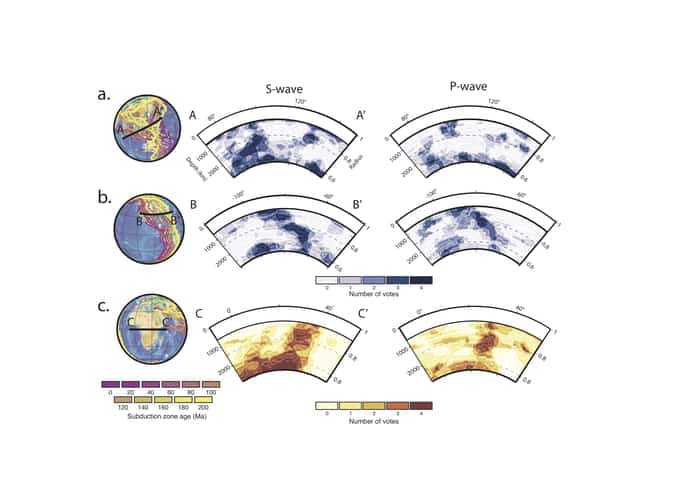
Cold, subducting oceanic plates are seen as fast velocity regions in (a) and (b), and warm rising mantle rock is seen as slow velocity regions in (c). Plates and plumes produce a coherent tomographic signal in S-wave models, but the signal partially disappears in P-wave models. (Courtesy: Columbia Engineering)
In 2006, Columbia Engineering Professor Renata Wentzcovitch published her first paper on ferropericlase, providing a theory for the spin crossover in this mineral. Her theory suggested it happened across a thousand kilometers in the lower mantle. Since then, Wentzcovitch, who is a professor in the applied physics and applied mathematics department, earth and environmental sciences, and Lamont-Doherty Earth Observatory at Columbia University, has published 13 papers with her group on this topic, investigating velocities in every possible situation of the spin crossover in ferropericlase and bridgmanite, and predicting properties of these minerals throughout this crossover. In 2014, Wenzcovitch, whose research focuses on computational quantum mechanical studies of materials at extreme conditions, in particular planetary materials predicted how this spin change phenomenon could be detected in seismic tomographic images, but seismologists still could not see it.
Click to extend...
Working with a multidisciplinary team from Columbia Engineering, the University of Oslo, the Tokyo Institute of Technology, and Intel Co., Wenzcovitch’s latest paper details how they have now identified the ferropericlase spin crossover signal, a quantum phase transition deep within the Earth’s lower mantle. This was achieved by looking at specific regions in the Earth’s mantle where ferropericlase is expected to be abundant. The study was published October 8, 2021, in Nature Communications.
“This exciting finding, which confirms my earlier predictions, illustrates the importance of materials physicists and geophysicists working together to learn more about what’s going on deep within the Earth,” said Wentzcovitch.
Spin transition is commonly used in materials like those used for magnetic recording. If you stretch or compress just a few nanometer-thick layers of a magnetic material, you can change the layer's magnetic properties and improve the medium recording properties. Wentzcovitch’s new study shows that the same phenomenon happens across thousands of kilometers in the Earth’s interior, taking this from the nano- to the macro-scale.
“Moreover, geodynamic simulations have shown that the spin crossover invigorates convection in the Earth’s mantle and tectonic plate motion. So we think that this quantum phenomenon also increases the frequency of tectonic events such as earthquakes and volcanic eruptions,” Wentzcovitch notes.
Our planet is full of mysteries. How exactly did Earth form and evolve to its current state? Why do some places in its interior seem hotter or colder, rising or sinking? For answers, geoscientists experiment on materials expected to be found in Earth’s interior, but these exist at immense pressures and temperatures that are impractical to reproduce in the lab. Renata Wentzcovitch, a condensed matter physicist, says quantum simulations can help.
“Nature is quantum,” said Wentzcovitch, a professor at Columbia Engineering and the Lamont Doherty Earth Observatory.
Science Highlights
Ferropericlase, one of the primary mantle minerals, is known to have an electronic spin transition. However, evidence of this transition in the Earth’s mantle has been challenging to find. Shephard et al. found changes in seismic wave speeds at two depth ranges that correspond to the iron spin transition in ferropericlase. The authors compared compressional and sheer-wave velocities in tomographic models, finding relative changes between the two types of waves that they could attribute to the transition. Using tomographic models is important because nonuniform thermochemical variations wash the signal out in global, one-dimensional models.
Nat. Commun. 12, 5905 (2021).
Follow us in Twitter for more research updates!
Thank you to our peer reviewers in 2024
E. Camporeale, R. Marino, T. Berger, Y. Chen, D. Folini, G. Fox, X. Li, D. Lucas, S. Tobias, M. Reichstein, J. Rundle, C. Shen, R. Wentzcovitch, and Y. Wen
|
|

